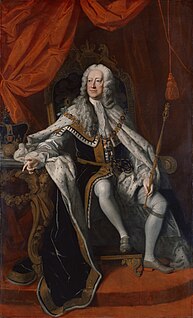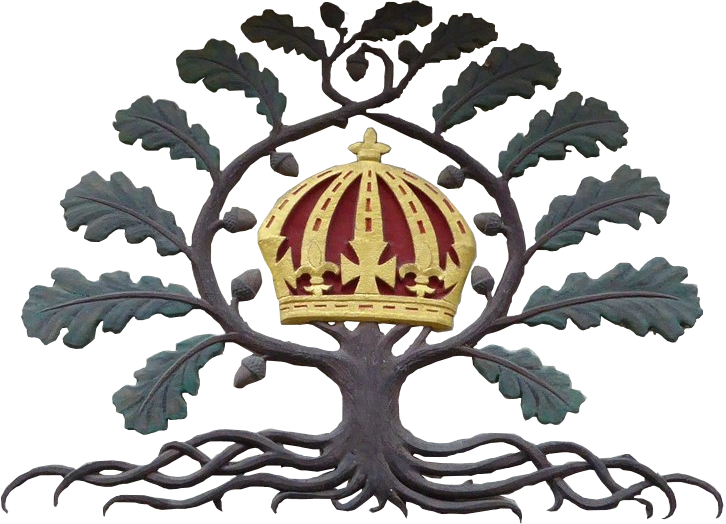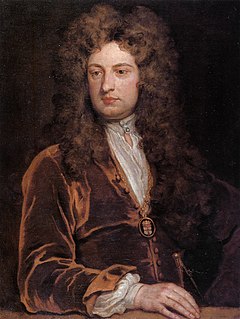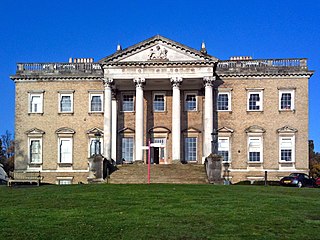The Whigs were a political faction and then a political party in the parliaments of England, Scotland, Great Britain, Ireland and the United Kingdom. Between the 1680s and 1850s, they contested power with their rivals, the Tories. The Whigs' origin lay in constitutional monarchism and opposition to absolute monarchy. The Whigs played a central role in the Glorious Revolution of 1688 and were the standing enemies of the Stuart kings and pretenders, who were Roman Catholic. The Whigs took full control of the government in 1715 and remained totally dominant until King George III, coming to the throne in 1760, allowed Tories back in. The Whig Supremacy (1715–1760) was enabled by the Hanoverian succession of George I in 1714 and the failed Jacobite rising of 1715 by Tory rebels. The Whigs thoroughly purged the Tories from all major positions in government, the army, the Church of England, the legal profession and local offices. The Party's hold on power was so strong and durable, historians call the period from roughly 1714 to 1783 the age of the Whig Oligarchy. The first great leader of the Whigs was Robert Walpole, who maintained control of the government through the period 1721–1742 and whose protégé Henry Pelham led from 1743 to 1754.

George II was King of Great Britain and Ireland, Duke of Brunswick-Lüneburg (Hanover) and a prince-elector of the Holy Roman Empire from 11 June 1727 (O.S.) until his death in 1760.

George I was King of Great Britain and Ireland from 1 August 1714 and ruler of the Duchy and Electorate of Brunswick-Lüneburg (Hanover) in the Holy Roman Empire from 1698 until his death in 1727.

Charles Watson-Wentworth, 2nd Marquess of Rockingham,, styled The Hon. Charles Watson-Wentworth before 1733, Viscount Higham between 1733 and 1746, Earl of Malton between 1746 and 1750 and The Marquess of Rockingham in 1750 was a British Whig statesman, most notable for his two terms as Prime Minister of Great Britain. He became the patron of many Whigs, known as the Rockingham Whigs, and served as a leading Whig grandee. He served in only two high offices during his lifetime, but was nonetheless very influential during his one and a half years of service.

The House of Hanover, whose members are known as Hanoverians, is a German royal house that ruled Hanover, Great Britain, and Ireland at various times during the 17th through 20th centuries. The house originated in 1635 as a cadet branch of the House of Brunswick-Lüneburg, growing in prestige until Hanover became an Electorate in 1692. George I became the first Hanoverian monarch of Great Britain and Ireland in 1714. At Victoria's death in 1901, the throne of the United Kingdom passed to her eldest son Edward VII, a member of the House of Saxe-Coburg and Gotha. The last reigning members of the House lost the Duchy of Brunswick in 1918 when Germany became a republic.

William Cavendish, 4th Duke of Devonshire,, styled Lord Cavendish before 1729 and Marquess of Hartington between 1729 and 1755, was a British Whig statesman and nobleman who was briefly nominal Prime Minister of Great Britain. He was the first son of William Cavendish, 3rd Duke of Devonshire and his wife, the former Catherine Hoskins.

The Royal Marriages Act 1772 was an act of the Parliament of Great Britain, which prescribed the conditions under which members of the British royal family could contract a valid marriage, in order to guard against marriages that could diminish the status of the royal house. The right of veto vested in the sovereign by this act provoked severe adverse criticism at the time of its passage. It was repealed as a result of the 2011 Perth Agreement, which came into force on 26 March 2015. Under the Succession to the Crown Act 2013, the first six people in the line of succession need permission to marry if they and their descendants are to remain in the line of succession.

The Duchy of Brunswick-Lüneburg, or more properly the Duchy of Brunswick and Lüneburg, was a historical duchy that existed from the late Middle Ages to the Early Modern era within the Holy Roman Empire. The duchy was located in what is now northwestern Germany. Its name came from the two largest cities in the territory: Brunswick and Lüneburg.

Ernest Augustus, known for most of his adult life as the Duke of Cumberland, was King of Hanover from 20 June 1837 until his death. He was the fifth son and eighth child of King George III of the United Kingdom and Hanover. As a fifth son, Ernest seemed unlikely to become a monarch, but none of his four elder brothers had a legitimate son who survived infancy. The Salic Law, which barred succession to or through a female, prevailed in Hanover; therefore, when his elder brother King William IV died in 1837, Ernest succeeded him as King of Hanover. In the United Kingdom the succession to the monarchy was determined by male-preference primogeniture, a different system, and his niece Victoria became queen, thus ending the personal union between the British and Hanoverian crowns that had existed since 1714.

Thomas Pelham-Holles, 1st Duke of Newcastle upon Tyne and 1st Duke of Newcastle-under-Lyme, was a British Whig statesman, whose official life extended throughout the Whig supremacy of the 18th century. He is commonly known as the Duke of Newcastle.

The House of Welf is a European dynasty that has included many German and British monarchs from the 11th to 20th century and Emperor Ivan VI of Russia in the 18th century.

The Tories were members of two political parties which existed sequentially in the Kingdom of England, the Kingdom of Great Britain and later the United Kingdom of Great Britain and Ireland from the 17th to the early 19th centuries. The first Tories emerged in 1678 in England, when they opposed the Whig-supported Exclusion Bill which set out to disinherit the heir presumptive James, Duke of York, who eventually became James II of England and VII of Scotland. This party ceased to exist as an organised political entity in the early 1760s, although it was used as a term of self-description by some political writers. A few decades later, a new Tory party would rise to establish a hold on government between 1783 and 1830, with William Pitt the Younger followed by Robert Jenkinson, 2nd Earl of Liverpool.
The Rockingham Whigs in 18th century British politics were a faction of the Whigs led by Charles Watson-Wentworth, 2nd Marquess of Rockingham, from about 1762 until his death in 1782. The Rockingham Whigs briefly held power from 1765 to 1766 and again in 1782, and otherwise were usually in opposition to the various ministries of the period.

The Kit-Cat Club was an early 18th-century English club in London with strong political and literary associations, committed to the furtherance of Whig objectives, meeting at the Trumpet tavern in London, and at Water Oakley in the Berkshire countryside.

Claremont, also known historically as 'Clermont', is an 18th-century Palladian mansion less than a mile south of the centre of Esher in Surrey, England. The buildings are now occupied by Claremont Fan Court School, and its landscaped gardens are owned and managed by the National Trust. Claremont House is a Grade I listed building.

Thomas Herring M.A. was Archbishop of Canterbury from 1747 to 1757.

Henrietta "Harriet" Pelham-Holles, Duchess of Newcastle-upon-Tyne was the wife of the British statesman and Prime Minister Thomas Pelham-Holles, 1st Duke of Newcastle-upon-Tyne. She was the daughter of Francis Godolphin, 2nd Earl of Godolphin and Lady Henrietta Churchill, 2nd Duchess of Marlborough and the granddaughter of Sidney Godolphin, 1st Earl of Godolphin and John Churchill, 1st Duke of Marlborough.

The First Rockingham ministry was a British ministry headed by the Marquess of Rockingham from 1765 to 1766 during the reign of King George III. The government was made up mainly of his followers known as the Rockingham Whigs. The most influential member of the government was the Duke of Newcastle, a former Prime Minister, who served as Lord Privy Seal. It is often referred to as the only government ever to have been made up almost entirely of members of the Jockey Club, with Rockingham himself being a prominent patron and follower of the turf. Rockingham was noted for his ignorance of foreign affairs, and his ministry failed to reverse the growing isolation of Britain within Europe.
Lewis Watson, 1st Baron Sondes, called Hon. Lewis Monson before 1746 and Hon. Lewis Watson from 1746 to 1760, was a British Whig politician and peer.

The Hamilton–Mohun Duel occurred on 15 November 1712 in Hyde Park, then on the outskirts of London. The principal participants were James Hamilton, 4th Duke of Hamilton, and Charles Mohun, 4th Baron Mohun. Both men died from wounds received.


















